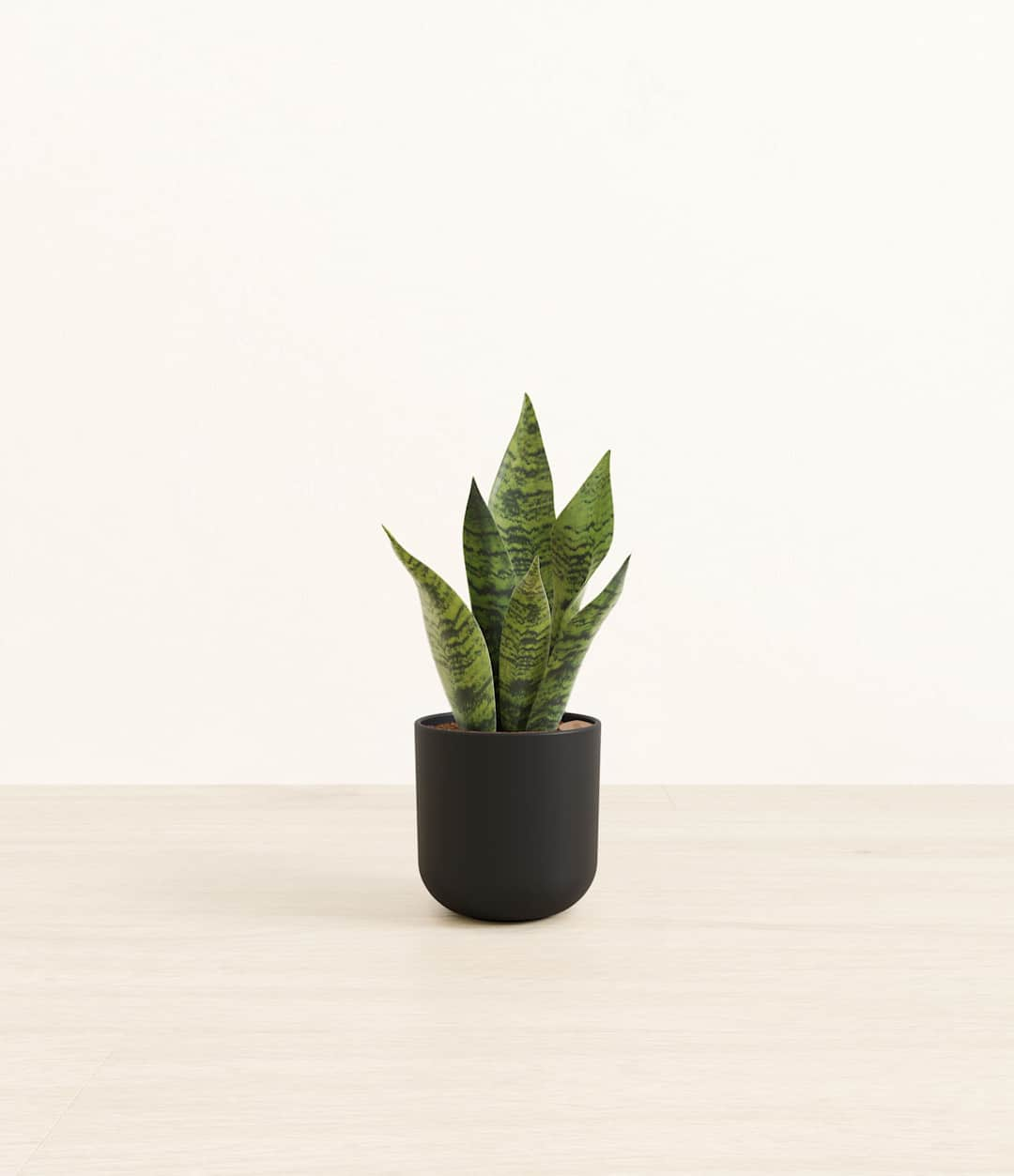How to Care for a White Sansevieria (Snake) Plant
Shop this plantAbout Green Snake Plant
Originating from the desert lands of Africa, Asia, and Madagascar, Sansevieria is the most resilient of all houseplants and thrives under any condition - including the most forgetful of plant lovers. Its tall and narrow sword-shaped leaves wear mesmerizing swatches of silver and sage contrasting against a deep-forest green, ever so elegantly stealing the show. Not only is it easy on the eyes, White Sansevieria is a master air-purifier, removing allergens and toxins from the air we breathe, so keeping it goes a long way for our health.
Other common names
- Ceylon Bowstring Hemp
- Vipers Bowstring Hemp
- Mother in Law's Tongue
- Sansevieria Zeylanica
How Often Should I Water My Green Snake Plant?
Green Snake Plant Light Needs
Green Snake Plant Plant Care
How Big Do Green Snake Plant Plants Grow?
Temperature & Humidity
The snake plant is a tropical, warmth-loving plant, which is notably adaptable when it comes to humidity levels, appreciating conditions anywhere from 40% to 60%. In its natural habitat, this unique plant has adapted to handle periods of drought, hence lower humidity levels are well-tolerated. The snake plant, while appreciating a boost in humidity, is not particularly demanding in terms of moisture levels. Nevertheless, ensuring that it’s not placed in overly dry conditions, particularly during winter when indoor heating can sap indoor air of its moisture, can contribute to its optimal growth and vitality. Enhancing humidity can be effectively achieved by grouping it with other plants or using a pebble tray, suitable for maintaining a comfortable environment for this plant.
Are Green Snake Plant Toxic for Pets & Kids?
Troubleshooting Common Problems with Green Snake Plant
Frequently Asked Questions about Green Snake Plant Plant
- Is a snake plant easy to take care of?Ready for some good news? Snake plants are among the easiest houseplants to care for. In fact, these beauties are considered excellent plants for beginners because they are very forgiving and require little maintenance once you find the perfect spot for them. And with easyplant, they’re that much easier!
- Do snake plants need direct sunlight to grow?In short, nope! Snake plants can grow in almost any condition, from bright light to almost no light at all. That being said, darker conditions will probably result in slower growth, while bright light exposure (once they’ve adjusted) tends to make these plants grow significantly faster. It’s also important to note that too much sunlight can actually burn their foliage.







